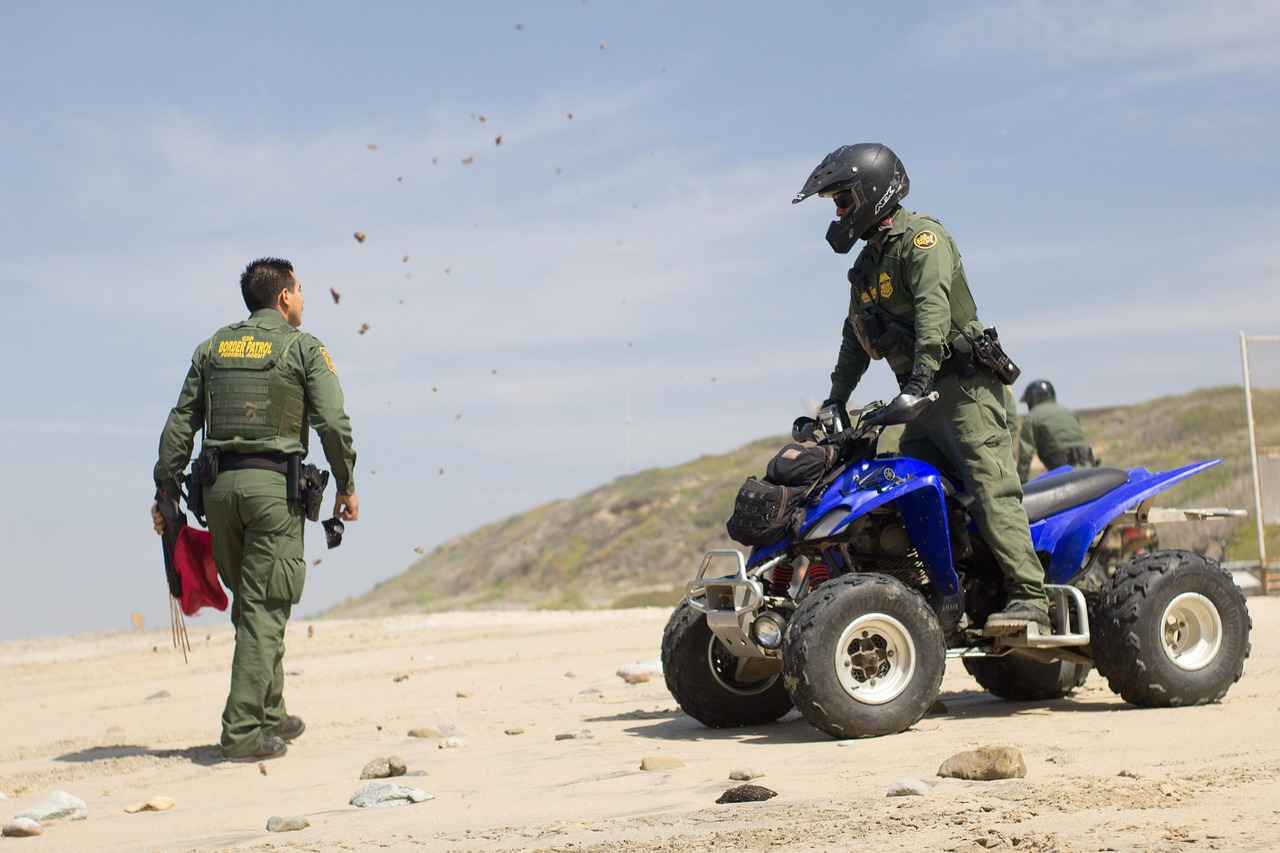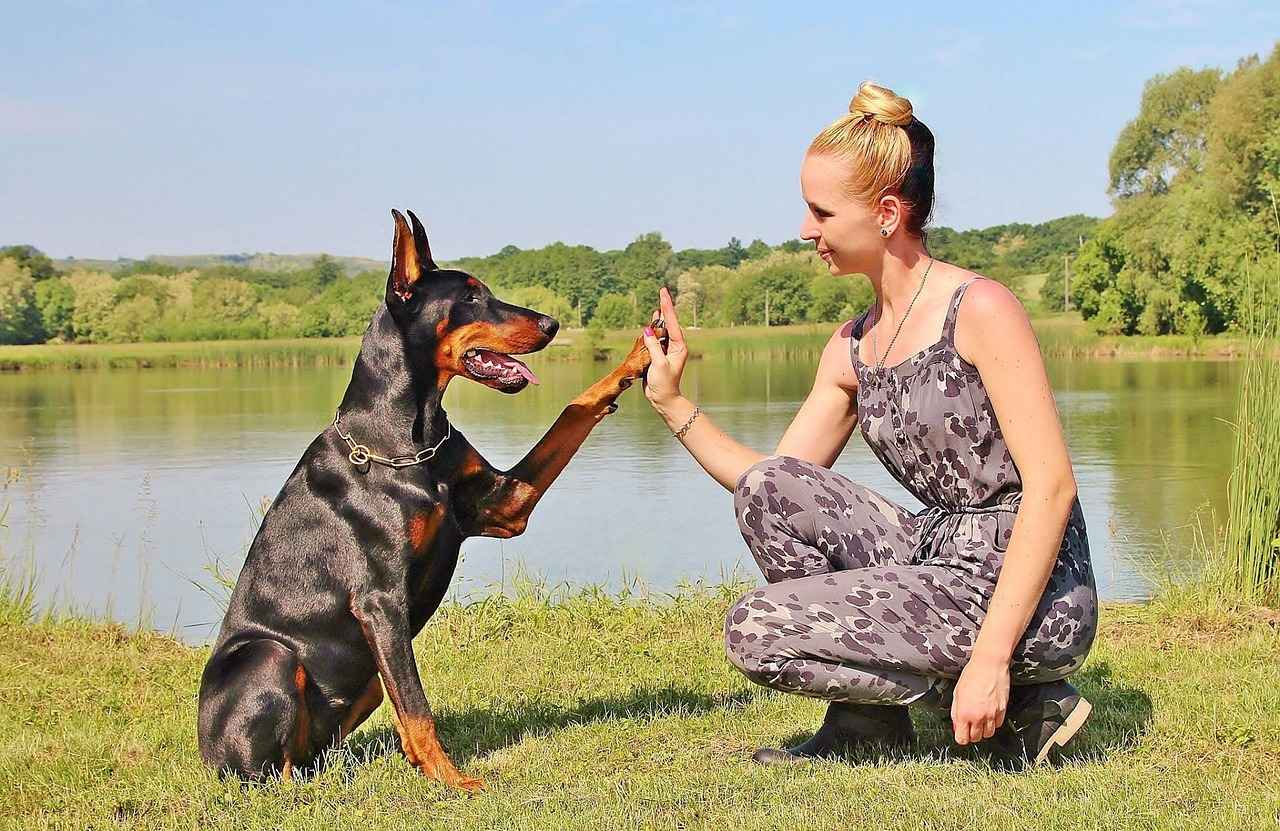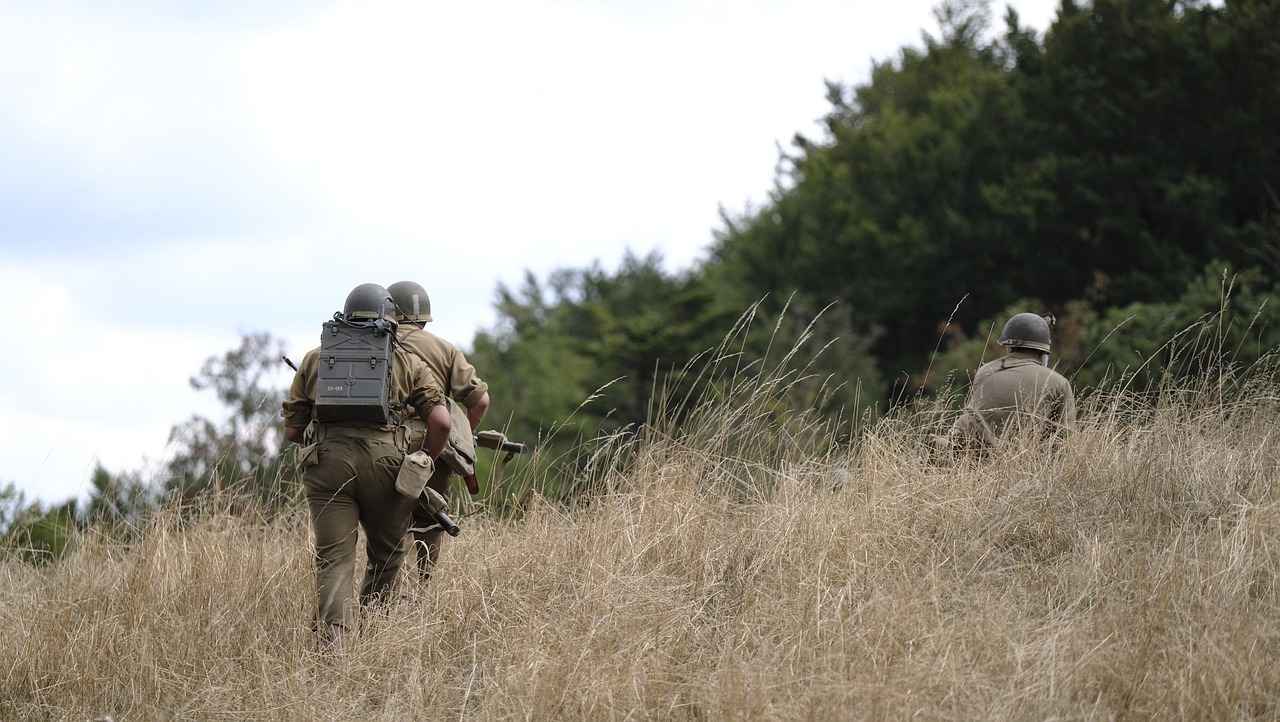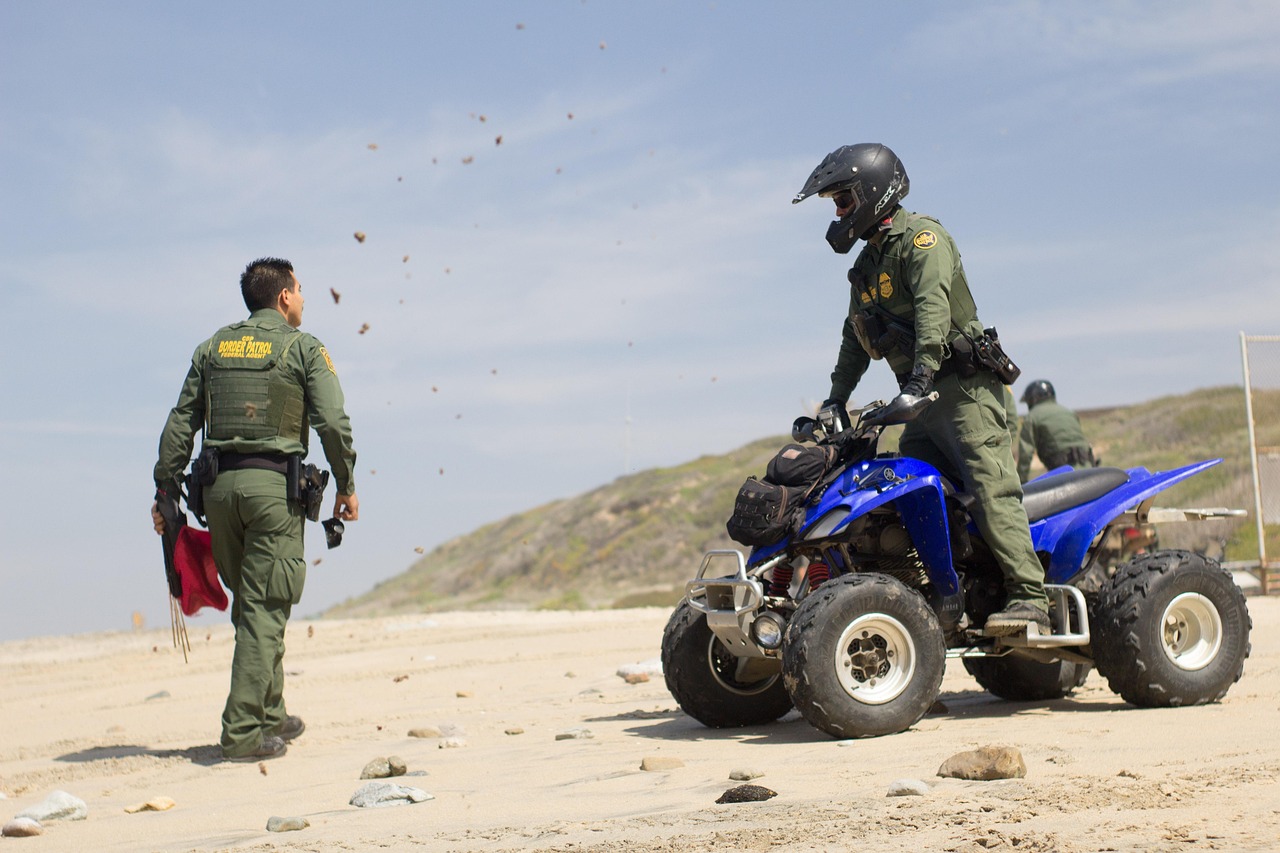Explore the most thrilling and memorable missions from the beloved children’s series, Paw Patrol. This article delves into the top rescues, character highlights, and the lessons learned from each adventure, showcasing the values of teamwork, bravery, and empathy.
What is Paw Patrol?
Paw Patrol is a widely acclaimed animated series that follows a group of rescue dogs led by a boy named Ryder. Together, they embark on various adventures to protect their community, Adventure Bay, while imparting valuable life lessons to young viewers.
Top Paw Patrol Missions
- Adventure Bay’s Biggest Rescue: In this gripping episode, the Paw Patrol faces a formidable challenge when a severe storm threatens their beloved Adventure Bay. With quick thinking and teamwork, they manage to save the day, demonstrating the power of collaboration.
- Sky’s Aerial Rescue: Sky, the fearless pilot pup, takes center stage as she showcases her incredible aerial skills. When a stranded animal is in peril atop a high cliff, her bravery shines as she swoops in for a daring rescue.
Character Highlights: Ryder
Ryder, the young leader of the Paw Patrol, embodies qualities such as responsibility and leadership. His character teaches viewers about guiding and supporting a team, emphasizing the importance of being a dependable friend.
Character Highlights: Chase
Chase, the police pup, is celebrated for his bravery and keen problem-solving abilities. His adventures often revolve around law enforcement themes, educating children about safety and the significance of community service.
- Chase’s Most Memorable Moments: This section explores Chase’s heroic acts, illustrating his dedication to protecting Adventure Bay while imparting lessons about courage and integrity.
- Chase’s Leadership Skills: Frequently taking on a leadership role during missions, Chase exemplifies the importance of teamwork and communication in achieving common goals.
Character Highlights: Marshall
Marshall, the lovable fire pup, adds humor and warmth to the team. His clumsiness often leads to unexpected yet successful solutions, reinforcing the idea that mistakes can sometimes lead to positive outcomes.
Educational Themes in Paw Patrol
Paw Patrol is not merely entertainment; it serves as a platform to teach children essential life lessons regarding teamwork, empathy, and problem-solving. Each episode reinforces these themes through engaging storytelling.
- Teamwork and Collaboration: The missions frequently require the pups to work together, highlighting how different strengths can contribute to a common objective, thereby instilling the importance of collaboration.
- Problem-Solving Skills: Each rescue mission presents unique challenges that the pups must navigate, encouraging young viewers to think critically and develop their problem-solving abilities.
Fan Favorites: Most Loved Episodes
This section highlights episodes that fans cherish the most, showcasing the reasons behind their popularity and the unforgettable moments that resonate deeply with audiences.
Impact of Paw Patrol on Children
Paw Patrol has a significant and lasting impact on its young audience. The series promotes positive values and encourages children to be proactive, caring, and responsible members of their communities. By engaging with the adventures of Ryder and his team, children learn the importance of helping others and standing up for what is right.

What is Paw Patrol?
Paw Patrol is an immensely popular animated television series that has captured the hearts of children and parents alike. Created by Keith Chapman, the show first premiered in 2013 and quickly became a staple in children’s programming. At its core, the series revolves around a group of heroic rescue dogs, each equipped with unique skills and personalities, who work together under the guidance of a resourceful boy named Ryder. Their primary mission is to protect their community, known as Adventure Bay, from various challenges and emergencies.
The show is not just about thrilling rescues; it also imparts important life lessons to its young viewers. Each episode is carefully crafted to teach values such as teamwork, empathy, and problem-solving. For instance, the pups often face situations that require them to collaborate, highlighting the significance of working together to achieve a common goal.
The diverse cast of characters adds depth to the show. Ryder, the leader, embodies qualities of responsibility and leadership, setting a positive example for children. His ability to guide and support his team teaches viewers about the importance of mentorship and collaboration. Each pup has distinct traits that contribute to the group’s success, making them relatable role models for young audiences.
- Chase: The police pup, known for his bravery and quick thinking, often takes the lead in law enforcement-themed missions. He teaches children about safety and the importance of community service.
- Marshall: The fire pup brings humor and warmth to the team. His clumsiness often leads to unexpected yet effective solutions, reinforcing the idea that mistakes can lead to success.
- Skye: The fearless aviator showcases the importance of courage and resourcefulness, especially during aerial rescues.
The show’s format typically involves a problem that arises in Adventure Bay, prompting Ryder and the Paw Patrol to spring into action. Each mission is filled with excitement and suspense, captivating the audience while also providing educational content. For example, the pups often encounter situations that require critical thinking and creativity, encouraging young viewers to develop their own problem-solving skills.
One of the most significant aspects of Paw Patrol is its ability to engage children with its colorful animation and relatable storylines. The series has also expanded beyond television, spawning a wide range of merchandise, including toys, clothing, and books, further solidifying its presence in popular culture.
Moreover, the show’s impact extends beyond entertainment; it promotes positive values and encourages children to be proactive, caring, and responsible members of their communities. Parents appreciate the messages conveyed through the series, as they align with the values they wish to instill in their children.
In conclusion, Paw Patrol is more than just an animated series; it is a powerful educational tool that fosters essential life skills in children. By combining thrilling adventures with valuable lessons, the show has become a beloved part of childhood for many, ensuring its legacy for years to come.

Top Paw Patrol Missions
Paw Patrol has captured the hearts of children and parents alike with its thrilling adventures and valuable life lessons. The series showcases a group of heroic pups led by Ryder, who embark on various missions to protect their community. The not only entertain but also emphasize key values such as teamwork, bravery, and problem-solving. Each episode presents unique challenges that highlight the importance of friendship and helping others.
One of the most memorable missions is titled Adventure Bay’s Biggest Rescue. In this thrilling episode, a fierce storm threatens to wreak havoc on Adventure Bay. The Paw Patrol quickly springs into action, demonstrating their ability to work together under pressure. With Ryder’s guidance, each pup uses their unique skills to overcome obstacles and rescue stranded citizens. This mission illustrates how collaboration and quick thinking can lead to success in dire situations.
Another iconic episode features Skye’s Aerial Rescue. Skye, the fearless pilot pup, showcases her exceptional flying skills when she is called to rescue a trapped animal from a steep cliff. This mission not only highlights Skye’s bravery but also teaches young viewers about perseverance and the importance of facing fears. Her determination to save the day inspires children to believe in themselves and their abilities.
In addition to these thrilling rescues, the series also emphasizes the significance of leadership. Ryder, the team leader, embodies qualities of responsibility and guidance. He teaches the pups about making decisions and supporting one another. This dynamic is particularly evident in episodes where Chase, the police pup, takes charge during critical missions. Chase’s bravery and problem-solving skills shine as he navigates challenges, reinforcing the idea that effective leadership is essential in any team.
Marshall, the fire pup, adds a delightful blend of humor and warmth to the team. His clumsiness often leads to unexpected yet successful solutions, reminding viewers that mistakes can lead to growth. This character teaches children that it’s okay to stumble, as long as they learn from their experiences. Marshall’s antics provide comic relief while also delivering important lessons about resilience and adaptability.
Each mission in Paw Patrol is carefully crafted to instill valuable lessons about empathy and community service. The pups often encounter situations where they must help others, reinforcing the idea that lending a helping hand is crucial. Through their adventures, children learn the importance of being proactive in their communities and supporting those in need.
The show also highlights the power of teamwork. In every episode, the pups must collaborate and utilize each other’s strengths to achieve their goals. This theme resonates with young viewers, teaching them that working together can lead to greater success than working alone. The missions encourage children to appreciate diversity and understand that everyone has something unique to contribute.
Overall, the serve as an engaging platform for teaching essential life skills. Each adventure not only entertains but also imparts valuable lessons about courage, friendship, and problem-solving. As children watch their favorite pups tackle challenges and rescue those in need, they are inspired to embody these qualities in their own lives.
Adventure Bay’s Biggest Rescue
is one of the most thrilling episodes of Paw Patrol, showcasing the power of teamwork and quick thinking in the face of adversity. In this gripping adventure, a fierce storm approaches Adventure Bay, bringing with it heavy rains and strong winds. The community is thrown into chaos as the storm threatens to cause significant damage and disrupt the lives of its residents.
As the storm clouds gather, Ryder, the dedicated leader of the Paw Patrol, quickly assesses the situation. He understands that every second counts and that the safety of Adventure Bay’s citizens is at stake. With a firm resolve, he calls upon his team of heroic pups, each bringing their unique skills to the table. The urgency of the situation highlights the importance of collaboration and communication among the team members.
- Chase takes charge of coordinating the rescue efforts, using his police skills to manage traffic and ensure that everyone is moving to safety.
- Marshall, the fire pup, is ready with his fire truck, prepared to handle any emergencies that may arise during the storm.
- Skye uses her helicopter to survey the area from above, identifying locations where help is needed most.
- Rubble and Rocky work together to clear debris and create safe pathways for residents to evacuate.
As the storm intensifies, the Paw Patrol faces numerous challenges. They encounter fallen trees blocking roads, pets stranded in backyards, and families needing assistance. Each pup showcases their problem-solving skills, demonstrating how their unique talents contribute to the success of the mission. The episode emphasizes the idea that working together makes them stronger and more effective in overcoming obstacles.
Throughout the episode, viewers are treated to heartwarming moments that highlight the pups’ camaraderie. For instance, when Skye rescues a frightened kitten from a tree, her bravery inspires the other pups to face their fears and tackle their own rescue tasks. This not only reinforces the theme of courage but also emphasizes the importance of empathy and compassion towards others in distress.
The climax of the episode occurs when the storm reaches its peak, causing a major flood in Adventure Bay. The Paw Patrol springs into action, using their skills to save a family trapped in their home. With teamwork and determination, they create a chain of rescue, passing the family to safety. This moment serves as a powerful reminder of the impact of collaboration and the importance of community.
In the end, the storm subsides, and Adventure Bay is left to recover. The episode closes with a sense of accomplishment as the Paw Patrol reflects on their successful mission. They learn that through teamwork and dedication, they can overcome even the most daunting challenges. This adventure not only entertains but also imparts valuable lessons about resilience, friendship, and the spirit of helping others.
Overall, is a standout episode that encapsulates the essence of the Paw Patrol series. It highlights how quick thinking, teamwork, and compassion can lead to successful outcomes, making it a beloved story among fans of all ages.
Sky’s Aerial Rescue
is one of the most thrilling episodes in the Paw Patrol series, showcasing the incredible bravery and skill of Sky, the fearless pilot pup. In this gripping mission, Sky’s aerial expertise is put to the ultimate test as she embarks on a daring rescue operation to save a stranded animal from a perilous high cliff.
The adventure begins when Ryder receives an urgent call about a baby eagle that has become trapped on a steep cliff after a sudden storm. With the winds howling and rain pouring, the situation is dire, and time is of the essence. Sky, equipped with her helicopter and unwavering determination, springs into action. Her friends, the other Paw Patrol pups, offer their support, showcasing the importance of teamwork in overcoming challenges.
As Sky ascends into the stormy skies, viewers are treated to breathtaking visuals of her flying maneuvers. The episode emphasizes not only her flying skills but also her ability to stay calm under pressure. Children watching are inspired by her courage and learn the value of facing fears head-on. Sky’s character embodies the spirit of adventure, encouraging young viewers to be bold and confident.
Throughout the mission, Sky employs various techniques to navigate the treacherous weather conditions. Her use of high-tech gadgets and problem-solving skills illustrates the importance of being resourceful. For instance, she utilizes her helicopter’s spotlight to locate the baby eagle, demonstrating how technology can aid in rescue operations.
The episode also includes moments of suspense, keeping young audiences on the edge of their seats. As Sky approaches the cliff, she must carefully assess the situation. The cliff is steep, and the winds are fierce, presenting a formidable obstacle. However, her training and instincts guide her as she devises a safe plan to rescue the stranded bird.
Once Sky reaches the baby eagle, the emotional connection between them is palpable. She reassures the frightened creature, showing empathy and understanding. This moment teaches children the significance of compassion and kindness towards animals, reinforcing the show’s educational themes.
As she secures the baby eagle and prepares for the descent, Sky’s friends cheer her on from below, showcasing the power of encouragement and support. This aspect of the episode highlights the importance of having a strong support system and working together to achieve a common goal.
Upon returning to Adventure Bay, Sky is celebrated as a hero. The community comes together to express their gratitude, teaching young viewers about the impact of community and the joy of helping others. The episode concludes with Ryder reminding the pups that teamwork and bravery can overcome any obstacle, a lesson that resonates deeply with children.
In summary, is more than just an exciting adventure; it is a story filled with valuable life lessons. Through Sky’s bravery, resourcefulness, and compassion, children learn about the importance of facing challenges, working as a team, and showing kindness to all living beings. This episode stands out as a shining example of what makes Paw Patrol a beloved series among young audiences.

Character Highlights: Ryder
Ryder is not just the leader of the Paw Patrol; he is a beacon of responsibility, leadership, and teamwork. As the young boy who guides a team of rescue dogs, Ryder exemplifies qualities that are essential for effective leadership. His character serves as a role model for children, teaching them the importance of supporting and guiding others in their community.
One of Ryder’s most significant traits is his ability to inspire confidence in his team. He understands that each pup has unique skills and talents, and he encourages them to use these strengths to tackle challenges. This not only fosters a sense of belonging among the pups but also highlights the importance of diversity in teamwork. Ryder’s leadership style emphasizes that every contribution counts, no matter how big or small.
In various episodes, Ryder faces numerous challenges that test his problem-solving abilities and decision-making skills. For instance, during a rescue mission where a storm threatens Adventure Bay, Ryder remains calm under pressure. He quickly assesses the situation, devises a plan, and delegates tasks to the pups, showcasing his strategic thinking. This moment teaches young viewers that leadership is not just about being in charge but also about making informed decisions and trusting your team.
- Empathy and Understanding: Ryder often shows empathy towards the animals and citizens of Adventure Bay. His ability to connect with others on an emotional level reinforces the idea that understanding and compassion are critical components of effective leadership.
- Encouraging Teamwork: Ryder frequently emphasizes the importance of teamwork. He reminds the pups that they can achieve more together than they could alone, instilling a sense of camaraderie and collaboration. This is especially evident during challenging missions where the pups must rely on each other’s strengths.
Moreover, Ryder’s character teaches children about the significance of responsibility. As the leader, he is always ready to take charge and ensure that the team is prepared for any situation. He demonstrates that being responsible involves not only taking care of oneself but also looking out for others. This lesson is vital for young viewers, as it encourages them to be proactive and considerate in their daily lives.
Ryder’s adventures with the Paw Patrol also highlight the importance of problem-solving skills. Each episode presents unique challenges that require creative thinking and collaboration. For example, when the pups encounter a situation that seems insurmountable, Ryder guides them through brainstorming solutions, teaching viewers that obstacles can often be overcome with teamwork and determination.
In summary, Ryder’s character is a multifaceted representation of what it means to be a leader. He embodies the qualities of responsibility, empathy, and teamwork, making him an exemplary figure for children. Through his guidance, the Paw Patrol not only saves the day but also imparts valuable life lessons that resonate with young audiences, encouraging them to become proactive, caring, and responsible members of their communities.

Character Highlights: Chase
Chase, the courageous police pup from Paw Patrol, is a central character known for his unwavering bravery and exceptional problem-solving abilities. As the series unfolds, Chase often finds himself in thrilling situations where his skills are put to the test, teaching young viewers about the importance of safety and community service.
Chase’s Role in Paw Patrol
As the leader of the Paw Patrol’s law enforcement efforts, Chase embodies the qualities of a true hero. His character is designed to resonate with children, encouraging them to understand the significance of law enforcement and the role it plays in their communities. Through his adventures, Chase illustrates how being responsible and vigilant can lead to positive outcomes.
Chase’s Most Memorable Moments
- The Great Adventure Bay Rescue: In one of the most iconic episodes, Chase leads the team during a major storm that endangers the town. His quick thinking and decisive actions save lives, demonstrating the essence of heroism.
- Chase and the Lost Kitten: This heartwarming episode showcases Chase’s dedication as he embarks on a mission to find a lost kitten. His determination and compassion teach children about the importance of helping those in need.
- Chase’s Obstacle Course Challenge: In this fun-filled episode, Chase faces an obstacle course that tests his agility and problem-solving skills. The challenges he overcomes reinforce the idea that perseverance is key to success.
Chase’s Leadership Skills
Chase often assumes a leadership role during missions, guiding his fellow pups with confidence and clarity. His ability to communicate effectively and delegate tasks showcases the importance of teamwork. Children learn that collaboration and support are essential when working towards a common goal.
Teaching Safety and Community Values
Through his adventures, Chase emphasizes important safety messages. For instance, he often reminds his friends to wear helmets while biking or to follow traffic signals, instilling a sense of responsibility in young viewers. These lessons are not only entertaining but also vital for children’s understanding of safety in their daily lives.
Chase’s Impact on Young Audiences
The character of Chase has a profound impact on children, inspiring them to be brave and proactive. His adventures encourage kids to be observant and to take action when they see someone in need. By portraying a positive role model, Chase helps shape the values of empathy, kindness, and civic responsibility in the next generation.
Conclusion
Chase’s character in Paw Patrol serves as a beacon of bravery and integrity. His adventures not only entertain but also educate young viewers about the importance of community service and safety. As children watch Chase tackle challenges head-on, they learn valuable lessons that extend beyond the screen, fostering a sense of responsibility and heroism in their everyday lives.
Chase’s Most Memorable Moments
highlight the bravery and dedication of this beloved police pup from the Paw Patrol series. Throughout the show, Chase consistently demonstrates his commitment to protecting Adventure Bay, imparting valuable lessons about courage, integrity, and teamwork.
One of Chase’s most iconic moments occurs during the Great Adventure Bay Flood episode. When heavy rains threaten to inundate the town, Chase springs into action, utilizing his skills to coordinate the rescue efforts. His decisive leadership not only saves the day but also instills a sense of safety and security among the residents. This episode emphasizes the importance of community service and the impact one individual can have in times of crisis.
Another memorable moment is when Chase leads the team in the Rescue of the Lost Puppy. In this episode, a frightened puppy gets lost in the woods, and Chase takes charge, using his tracking skills to locate the pup. His determination and compassion shine through as he reassures the lost puppy, teaching young viewers the importance of empathy and kindness in helping others. This mission showcases Chase’s ability to remain calm under pressure, reinforcing the message that true heroes are not only brave but also caring.
Chase’s commitment to safety is further illustrated in the Adventure Bay Safety Day episode. Here, he organizes a community event to educate children about safety practices. Chase’s enthusiasm for teaching others about traffic safety and emergency protocols highlights the show’s educational aspect, making learning fun and engaging. This episode serves as a reminder of the significance of being prepared and aware of one’s surroundings, particularly for young viewers.
Moreover, Chase’s interactions with his fellow Paw Patrol members reveal his strong sense of teamwork. In the Chase Gets a New Vehicle episode, he learns to adapt to changes when he receives a new police vehicle. Initially hesitant, Chase discovers that embracing change can lead to exciting new possibilities. This moment teaches children that flexibility and cooperation are essential traits in achieving success as a team.
Chase’s character is also marked by his unwavering loyalty to his friends. In the Marshall’s Fire Rescue episode, when Marshall faces a challenging situation while battling a fire, Chase is there to support him. He quickly devises a plan to ensure Marshall’s safety, demonstrating that true friendship involves being there for one another during tough times. This lesson in loyalty and support resonates with viewers, reinforcing the importance of standing by friends and colleagues.
In addition to his heroic acts, Chase’s personality brings a unique charm to the series. His catchphrase, “Chase is on the case!” not only highlights his readiness to take action but also serves as a motivational mantra for children. This phrase encourages kids to be proactive and face challenges head-on, fostering a sense of confidence and empowerment.
Overall, Chase’s most memorable moments in Paw Patrol are a testament to his character’s values of bravery, integrity, and teamwork. Through his adventures, young viewers learn essential life lessons that extend beyond the screen, encouraging them to embody these qualities in their own lives. As a role model, Chase inspires children to be courageous and compassionate, making him a standout character in the beloved series.
Chase’s Leadership Skills
In the vibrant world of Paw Patrol, Chase, the police pup, stands out not only for his bravery but also for his exceptional leadership skills. Throughout various missions, he often takes the initiative, showcasing the essential qualities of a leader. His ability to communicate effectively and coordinate with his team members underlines the significance of teamwork in achieving their common objectives.
Chase’s leadership is evident during critical rescue operations. For instance, when the Paw Patrol faces a daunting challenge—like rescuing a group of animals stranded during a flood—Chase quickly assesses the situation and devises a plan. He communicates clearly with his fellow pups, delegating tasks according to each member’s strengths. This not only exemplifies his leadership but also reinforces the value of collaboration in overcoming obstacles.
- Effective Communication: Chase ensures that every member of the team is informed and aware of their responsibilities. His clear instructions help minimize confusion and enhance efficiency.
- Encouraging Others: As a leader, Chase motivates his teammates, reminding them of their capabilities. His positive reinforcement fosters a supportive environment where each pup feels valued.
- Problem-Solving: Chase often encounters unexpected challenges. His ability to think on his paws and adapt quickly is a testament to his leadership skills, allowing the team to navigate through crises effectively.
Moreover, Chase’s leadership extends beyond just mission scenarios. He serves as a role model for young viewers, teaching them the importance of responsibility and integrity. His character illustrates that true leadership is not about being in charge but about guiding others and ensuring that everyone works together towards a common goal.
In various episodes, we see Chase stepping up during moments of crisis. For example, during the infamous Adventure Bay storm, he takes charge, coordinating rescue efforts and ensuring that every pup knows their role. His calm demeanor and quick thinking not only save the day but also instill a sense of confidence in his team.
Additionally, Chase’s leadership skills are complemented by his strong sense of justice. He often emphasizes the importance of law and order, teaching children about safety and community service. This reinforces the idea that being a leader also means being a responsible citizen who looks out for the well-being of others.
Through his adventures, Chase exemplifies the notion that leadership is about collaboration, communication, and compassion. By working closely with his teammates, he demonstrates that every member of a team plays a crucial role in achieving success. This message resonates with young viewers, encouraging them to embrace teamwork and support one another in their own lives.
In conclusion, Chase’s leadership skills in Paw Patrol not only contribute to the success of their missions but also impart valuable lessons to children about the importance of teamwork, communication, and responsibility. As they watch Chase in action, young viewers learn that true leadership involves guiding others, making decisions with integrity, and always striving to work together towards a common goal.

Character Highlights: Marshall
Marshall, the lovable fire pup of the Paw Patrol, is a character who brings both humor and warmth to the team. His playful nature and clumsy antics often lead to unexpected yet effective solutions during their rescue missions. This delightful combination of traits not only entertains young viewers but also imparts a vital lesson: mistakes can lead to success.
One of Marshall’s most notable characteristics is his enthusiasm for firefighting. He is always eager to jump into action, showcasing the importance of being ready to help others in need. His passion for his job is infectious, inspiring his fellow pups and the children watching to embrace their own passions with the same vigor.
Marshall’s clumsiness, often portrayed through humorous mishaps, serves a dual purpose. While it provides comic relief, it also demonstrates that everyone makes mistakes and that these can lead to creative problem-solving. For instance, in one episode, his accidental slip leads to a clever way of extinguishing a fire, showcasing that even errors can have a silver lining.
Moreover, Marshall’s role in the team emphasizes the value of teamwork. Despite his occasional blunders, he is always supported by his friends, illustrating the importance of camaraderie. The other pups rally around him, proving that collaboration is essential in overcoming challenges. This dynamic reinforces the idea that every team member, regardless of their strengths or weaknesses, has something valuable to contribute.
In addition to his humor and teamwork, Marshall also embodies the spirit of resilience. When faced with setbacks, he remains optimistic and determined, teaching young viewers the significance of perseverance. His journey reflects the reality that even when things don’t go as planned, maintaining a positive attitude can lead to unexpected successes.
Marshall’s character also resonates with children on a deeper level. He often expresses feelings of self-doubt and insecurity, making him relatable. Young viewers can see themselves in his struggles, learning that it’s okay to feel uncertain at times. This relatability not only makes him a beloved character but also serves as a reminder that everyone has their own unique journey.
In summary, Marshall is more than just the fire pup of the Paw Patrol; he is a multifaceted character who teaches valuable lessons about humor, teamwork, and resilience. His clumsiness is not a flaw but rather a unique aspect of his personality that leads to unexpected solutions and laughter. Through his adventures, children learn that mistakes are a part of life and can often lead to the most rewarding outcomes.

Educational Themes in Paw Patrol
Paw Patrol is not merely a source of entertainment for children; it serves as a powerful educational tool that imparts essential life lessons through each thrilling episode. The series emphasizes the importance of teamwork, empathy, and problem-solving, all wrapped in engaging storytelling that captivates young audiences.
One of the most significant themes in Paw Patrol is the value of teamwork. Each mission undertaken by the Paw Patrol pups requires them to combine their unique skills and strengths to achieve a common goal. For instance, when faced with a crisis, the pups must communicate effectively and support one another, demonstrating how collaboration can lead to success. This theme resonates with children, teaching them that working together can help overcome challenges, whether in school, sports, or everyday life.
Each episode of Paw Patrol presents a new and exciting challenge that requires critical thinking and problem-solving skills. The pups encounter various obstacles that demand creative solutions, encouraging young viewers to think outside the box. For example, in one episode, the team has to devise a plan to rescue a kitten stuck in a tree. This scenario not only entertains but also prompts children to analyze the situation and consider different approaches to solve problems. By showcasing how the pups navigate these challenges, the show inspires children to develop their own problem-solving abilities.
Paw Patrol also instills a sense of empathy in its young audience. The pups often find themselves in situations where they must help others, whether it’s rescuing an animal in distress or assisting a neighbor in need. These scenarios teach children the importance of caring for others and understanding their feelings. The characters model compassionate behavior, showing that lending a helping hand can make a significant difference in someone’s life. This lesson is crucial in fostering a generation of kind and considerate individuals.
Through characters like Ryder, the leader of the Paw Patrol, children learn about responsibility and leadership. Ryder exemplifies qualities such as decisiveness, accountability, and the ability to guide a team effectively. His role encourages children to take initiative and understand the importance of being responsible, whether in group settings or personal endeavors. This portrayal of leadership serves as a model for young viewers, inspiring them to step up and take charge when necessary.
In conclusion, the educational themes embedded in Paw Patrol extend far beyond simple entertainment. By focusing on teamwork, problem-solving, empathy, and responsibility, the series equips children with valuable skills and lessons that can be applied in their daily lives. As they engage with the adventures of the Paw Patrol pups, young viewers are not only entertained but also nurtured into becoming proactive and compassionate members of their communities.
Teamwork and Collaboration
is a central theme throughout the Paw Patrol series, illustrating the incredible power of working together. The missions undertaken by the courageous pups are not just about individual bravery but also about how their unique strengths can come together to achieve a common goal. Each pup brings something special to the table, and their collaboration showcases the essence of teamwork.
In many episodes, the Paw Patrol encounters challenges that seem insurmountable at first glance. However, it is through their combined efforts that they find solutions. For instance, when faced with a natural disaster, the pups must quickly assess the situation and divide tasks based on their skills. Chase might take charge of crowd control, while Marshall focuses on fire safety, and Skye provides aerial support. This division of labor not only speeds up the rescue process but also emphasizes the importance of trusting each other’s abilities.
Moreover, the show teaches young viewers that collaboration requires effective communication. The pups often hold brief discussions to strategize before executing their plans. This aspect of their teamwork highlights how sharing ideas and listening to one another can lead to better outcomes. Children watching these interactions learn that every team member’s voice matters, and that success is often a collective achievement.
Another significant lesson in teamwork comes from observing how the pups handle mistakes. When a plan doesn’t go as expected, instead of blaming one another, they regroup and analyze what went wrong. This resilience is crucial in any team environment, teaching children that setbacks can be valuable learning experiences. By demonstrating that it’s okay to make mistakes, Paw Patrol fosters a growth mindset, encouraging young viewers to embrace challenges rather than shy away from them.
Furthermore, the series showcases the emotional support that teammates provide each other. During high-stress missions, the pups often encourage one another, reinforcing the idea that teamwork is not just about task completion but also about lifting each other up. This emotional intelligence is a vital component of successful collaboration, teaching children the importance of empathy and support in any group setting.
In addition to problem-solving and emotional support, the pups’ adventures often highlight the significance of diversity in a team. Each character has distinct skills and personality traits, which contribute to the overall success of the mission. For example, Zuma excels in water rescues, while Rocky is the recycling expert. This diversity teaches children that different perspectives and abilities can enhance creativity and innovation, making the team stronger as a whole.
As the series progresses, viewers witness the evolution of the pups’ teamwork skills. They learn to rely on one another more and develop a sense of camaraderie that extends beyond their missions. This bond is a powerful reminder that collaboration fosters friendship, making challenges feel less daunting and more manageable.
In conclusion, the Paw Patrol series effectively illustrates the importance of through engaging storytelling and relatable characters. Young viewers are not only entertained but also educated on the values of communication, empathy, and diversity in teamwork. These lessons are invaluable as they prepare children for future collaborative endeavors, whether in school, sports, or other group activities.
Problem-Solving Skills
Paw Patrol, the beloved animated series, not only entertains young audiences but also serves as a valuable educational tool. One of the most significant aspects of the show is its focus on . Each episode presents the pups with unique challenges that require them to think critically and devise effective solutions.
Throughout their adventures, the Paw Patrol team encounters a variety of obstacles, from rescuing animals in distress to navigating natural disasters. These scenarios encourage young viewers to engage in critical thinking as they watch the pups assess situations, brainstorm possible solutions, and implement their plans. For instance, when faced with a runaway train, the pups must quickly devise a strategy to stop it, showcasing the importance of quick decision-making under pressure.
The show emphasizes the idea that there is often more than one way to solve a problem. Each pup brings unique skills to the table, demonstrating that collaboration is key to overcoming challenges. For example, while Chase might focus on law enforcement techniques, Marshall’s firefighting skills can provide unexpected solutions during emergencies. This diversity in skill sets teaches children that teamwork can lead to more effective problem-solving.
- Critical Thinking: Viewers are encouraged to analyze situations alongside the pups, fostering a mindset that values reasoning and logic.
- Creativity: The pups often have to think outside the box, inspiring children to explore innovative solutions to their own problems.
- Resilience: When things don’t go as planned, the pups demonstrate perseverance, teaching children the importance of not giving up.
In addition to enhancing critical thinking, the show also highlights the importance of communication. The pups must share their ideas and listen to one another to develop the best course of action. This aspect of the show encourages children to express their thoughts and collaborate effectively, both in play and real-life situations.
Moreover, the lessons learned through these missions extend beyond the screen. Parents and educators can utilize the show’s themes to engage children in discussions about problem-solving strategies in everyday life. For instance, when faced with a challenge at school or home, children can reflect on how the Paw Patrol pups approached similar situations. This connection reinforces the idea that problem-solving is a valuable skill that can be applied in various contexts.
Overall, the showcased in Paw Patrol serve as a vital learning tool for young viewers. By watching their favorite pups tackle challenges with creativity, teamwork, and resilience, children are inspired to develop their own problem-solving abilities. The series not only entertains but also equips the next generation with essential skills that will benefit them throughout their lives.

Fan Favorites: Most Loved Episodes
Paw Patrol has captured the hearts of children and parents alike with its engaging stories and lovable characters. Among its many episodes, certain ones stand out as fan favorites, resonating deeply with audiences for various reasons. In this section, we will explore these beloved episodes, highlighting what makes them so memorable and the valuable lessons they impart.
Fans often gravitate towards episodes that combine adventure, teamwork, and relatable themes. These episodes not only entertain but also provide important life lessons, making them resonate with both children and their families. The emotional connections formed during these adventures lead to lasting memories.
- Adventure Bay’s Biggest Rescue
- Sky’s Aerial Rescue
- Chase’s Heroic Adventure
- Marshall’s Fire Safety Day
This thrilling episode sees the Paw Patrol facing a fierce storm that threatens their beloved Adventure Bay. The pups must work together, showcasing their unique skills to ensure everyone’s safety. The themes of bravery and community resonate strongly with viewers, making it a top favorite.
In this episode, Sky takes center stage as she showcases her aerial skills to rescue a stranded animal. The breathtaking visuals and Sky’s determination highlight the importance of facing fears and using one’s strengths to help others, making it a memorable episode for fans.
Chase, the police pup, embarks on a mission that tests his problem-solving skills and leadership. This episode emphasizes the importance of courage and integrity, teaching children that being brave can lead to great outcomes.
Marshall’s antics during Fire Safety Day provide both humor and valuable lessons about fire safety. His clumsiness leads to unexpected solutions, reinforcing the idea that mistakes can sometimes lead to success. This episode teaches kids about safety while keeping them entertained.
Each of these fan-favorite episodes contains memorable moments that leave a lasting impression. Whether it’s a heartwarming rescue, a funny mishap, or an inspiring lesson, these moments contribute to the overall appeal of the series. They remind viewers of the importance of friendship, teamwork, and helping others.
- Teamwork is Essential: Many episodes highlight how the pups must rely on each other to succeed. This teaches children the value of collaboration.
- Bravery Comes in Many Forms: Characters like Chase and Sky show that being brave doesn’t always mean being fearless; it often involves facing challenges head-on.
- Problem-Solving is Key: Each mission presents unique challenges that encourage young viewers to think critically and creatively.
In conclusion, the episodes that fans adore the most are not just entertaining; they are rich with lessons that resonate with audiences of all ages. By showcasing teamwork, bravery, and problem-solving, Paw Patrol continues to teach and inspire young viewers, ensuring its place as a beloved series.

Impact of Paw Patrol on Children
Paw Patrol is not just an entertaining animated series; it plays a significant role in shaping the values and behaviors of its young viewers. The show, which features a group of rescue dogs led by a boy named Ryder, is designed to engage children while instilling important life lessons. Through its exciting missions and character-driven narratives, Paw Patrol encourages children to embody positive values such as teamwork, empathy, and responsibility.
One of the most remarkable aspects of Paw Patrol is its ability to promote positive values among children. The characters exemplify traits such as kindness, bravery, and determination. Each episode showcases the pups working together to overcome challenges, demonstrating that collaboration is essential in achieving common goals. This reinforces the idea that helping others and being part of a community are vital components of personal growth.
Paw Patrol encourages children to be proactive rather than reactive. The characters often face unexpected challenges and must devise solutions quickly. This not only entertains but also teaches children the importance of taking initiative and being resourceful in difficult situations. By watching Ryder and his team tackle various problems, children learn that they too can make a difference in their own lives and communities.
The show places a strong emphasis on empathy and caring for others. Each mission often involves helping someone in need, whether it’s rescuing an animal or assisting a friend. This consistent theme helps children understand the importance of being compassionate and supportive. By identifying with the characters and their adventures, young viewers are encouraged to practice kindness in their everyday interactions.
Through the character of Ryder, who leads the Paw Patrol, children are introduced to the concept of responsibility. Ryder’s role as the leader emphasizes the significance of guiding others and making thoughtful decisions. This not only showcases the importance of leadership but also teaches children that being responsible involves caring for others and being accountable for their actions.
Each episode of Paw Patrol is filled with thrilling adventures that also serve as valuable lessons in problem-solving and critical thinking. The pups face various dilemmas that require them to analyze situations and devise effective solutions. This encourages children to think critically and develop their own problem-solving skills, which are essential for navigating real-life challenges.
Paw Patrol actively promotes the idea of being engaged members of the community. The characters often participate in community events, showcasing the importance of volunteering and contributing to the greater good. This not only inspires children to be active participants in their own communities but also instills a sense of pride in helping others.
In summary, Paw Patrol has a profound and lasting impact on its young audience. By promoting positive values, encouraging proactivity, fostering empathy, and building responsibility, the show equips children with essential life skills. As they engage with the characters and their adventures, children are inspired to become proactive, caring, and responsible members of their communities, ultimately shaping a brighter future.
Frequently Asked Questions
- What age group is Paw Patrol suitable for?
Paw Patrol is primarily aimed at preschoolers and young children, typically ages 2 to 6. The show’s engaging characters and simple storylines make it perfect for little ones!
- What are the main lessons taught in Paw Patrol?
Paw Patrol teaches valuable lessons about teamwork, problem-solving, and empathy. Each episode emphasizes the importance of helping others and working together to overcome challenges.
- Who are the main characters in Paw Patrol?
The main characters include Ryder, the leader; Chase, the police pup; Marshall, the fire pup; Skye, the pilot pup; and several others, each with unique skills that contribute to their missions.
- Are there any educational benefits to watching Paw Patrol?
Absolutely! The show encourages critical thinking, social skills, and moral values. Kids learn about responsibility and the importance of community service through the pups’ adventures.
- Can Paw Patrol be enjoyed by parents too?
Definitely! Many parents find joy in watching Paw Patrol with their kids. The humor and heartwarming moments make it entertaining for adults as well, creating a fun family viewing experience.



























